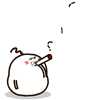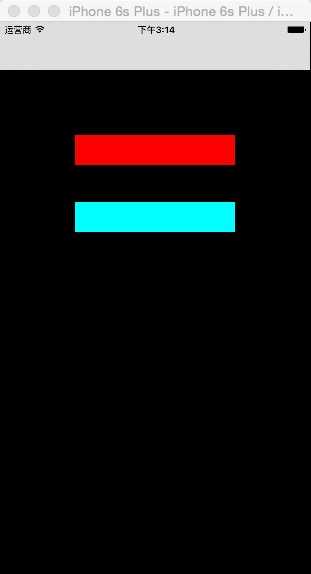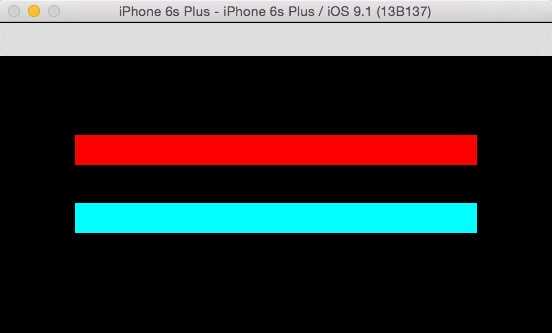标签:
我们除了在
storyBoard中可以把控件进行约束,在代码中我们同样可以对其进行约束,使得你的app不管是在什么设备中,他的界面设计都不会发生改变;
// // ViewController.m // 自动布局代码版 // // Created by Biaoac on 16/3/26. // Copyright © 2016年 scsys. All rights reserved. // #import "ViewController.h" @interface ViewController () @end // 使用 storyBoard ID 找到控制器 // UIStoryboard *s = [UIStoryboard storyboardWithName:@"Main" bundle:[NSBundle mainBundle]]; // ViewController *vc = [s instantiateViewControllerWithIdentifier:@"ViewController"]; /* // 使用storyboard 跳转页面 也可以用代码跳转 // 右键拖拽 按钮 到另一个视图控制器 会弹出: 1.show(push) 2.present(模态) 3.popover(ipad 弹出列表) */ /* 横向:距离父视图左侧100、视图本身的宽度最小时100距离父视图右侧是100 竖向:距离父视图顶部是150、视图本身高度最小是30 使用可视化格式语言:VFL : Visual format language 描述 H:表示的是水平方向, V:表示的是垂直方向; | :表示父视图 - :本身表示一段距离 - 距离 - 表示制定距离 [字符串表示的视图] 参照视图 [字符串表示的视图(视图的宽高或者最小最大的宽高、相对宽高)] 注意;小括号千万不要丢掉 使用代码自动布局(AutorlayOut)的时候 frame就会失效, ——》 不需要再去设置视图的Frame 使用代码自动布局的时候 需要禁用 translatesAutoresizingMaskIntoConstraints = No; 使用自动布局的步骤: 1、translatesAutoresizingMaskIntoConstraints = No; 2、绑定视图与字符串 3、添加约束 */ @implementation ViewController - (void)viewDidLoad { [super viewDidLoad]; // [self demo1]; // [self demo2]; // [self demo3]; // [self demo4]; [self demo5]; } /** * 创建视图的方法 * * @param view 需要创建视图的类名 字符串 * @param sView 添加到的目标 父视图 * * @return 创建好 并且添加到父视图上的 视图 */ //在这里我们把创建视图的方法封装起来,在demo2.3、4、5、里使用 - (UIView *)creatView:(NSString *)view addToView:(UIView *)sView{ UIView *myView = [[NSClassFromString(view) alloc]init]; myView.translatesAutoresizingMaskIntoConstraints = NO; [sView addSubview:myView]; return myView; } //我们先按照正常的流程来一遍 - (void)demo1{ self.view.backgroundColor = [UIColor whiteColor]; UIView *view = [[UIView alloc]init]; view.backgroundColor = [UIColor orangeColor]; [self.view addSubview:view]; // 可视化语言: // 1、禁用 view.translatesAutoresizingMaskIntoConstraints = NO; // 2、绑定视图和字符串 NSDictionary *dic = NSDictionaryOfVariableBindings(view); // 3、添加约束 /** * * VisualFormat VFL语句 * Options:基于哪个方向去布局 * metrics :绑定数值(NSNumber)与字符串 * views : 绑定视图与字符串的 */ [self.view addConstraints:[NSLayoutConstraint constraintsWithVisualFormat:@"H:|-100-[view(>=100)]-100-|" options:NSLayoutFormatAlignAllLeft metrics:nil views:dic]]; // H:|-100-[view(>=100)]-100-| // V:|-150-[view(40)] [self.view addConstraints:[NSLayoutConstraint constraintsWithVisualFormat:@"V:|-150-[view(40)]" options:NSLayoutFormatAlignAllLeft metrics:nil views:dic]]; } //然后我们在demo1的基础上又添加了一个View - (void)demo2{ UIView *view1 = [self creatView:@"UIView" addToView:self.view]; view1.backgroundColor = [UIColor redColor]; UIView *view2 = [self creatView:@"UIView" addToView:self.view]; view2.backgroundColor = [UIColor cyanColor]; // 2.绑定 NSDictionary *dic = NSDictionaryOfVariableBindings(view1,view2); // 3.添加约束 //view1: // H:|-100-[view1(>=100)]-100-| // V:|-150-[view1(40)] [self.view addConstraints:[NSLayoutConstraint constraintsWithVisualFormat:@"H:|-100-[view1(>=100)]-100-|" options:NSLayoutFormatAlignAllLeft metrics:nil views:dic]]; [self.view addConstraints:[NSLayoutConstraint constraintsWithVisualFormat:@"V:|-150-[view1(40)]" options:NSLayoutFormatAlignAllLeft metrics:nil views:dic]]; //view2: // H:|-100-[view1(>=100)]-100-| // V:[view1]-50-[view2(view1)] [self.view addConstraints:[NSLayoutConstraint constraintsWithVisualFormat:@"H:|-100-[view2(>=100)]-100-|" options:NSLayoutFormatAlignAllLeft metrics:nil views:dic]]; [self.view addConstraints:[NSLayoutConstraint constraintsWithVisualFormat:@"V:[view1]-50-[view2(view1)]" options:NSLayoutFormatAlignAllLeft metrics:nil views:dic]]; } //研究发现: 两个视图竖向是有交集的 我们就做了一下优化 - (void)demo3{ UIView *view1 = [self creatView:@"UIView" addToView:self.view]; view1.backgroundColor = [UIColor redColor]; UIView *view2 = [self creatView:@"UIView" addToView:self.view]; view2.backgroundColor = [UIColor cyanColor]; // 2.绑定 NSDictionary *dic = NSDictionaryOfVariableBindings(view1,view2); // 3.添加约束 //view1: // H:|-100-[view1(>=100)]-100-| // V:|-150-[view1(40)] [self.view addConstraints:[NSLayoutConstraint constraintsWithVisualFormat:@"H:|-100-[view1(>=100)]-100-|" options:NSLayoutFormatAlignAllLeft metrics:nil views:dic]]; //view2: // H:|-100-[view1(>=100)]-100-| // V:[view1]-50-[view2(view1)] [self.view addConstraints:[NSLayoutConstraint constraintsWithVisualFormat:@"H:|-100-[view2(>=100)]-100-|" options:NSLayoutFormatAlignAllLeft metrics:nil views:dic]]; [self.view addConstraints:[NSLayoutConstraint constraintsWithVisualFormat:@"V:|-150-[view1(40)]-50-[view2(view1)]" options:NSLayoutFormatAlignAllLeft metrics:nil views:dic]]; } //继续优化,使代码变的更加清晰, - (void)demo4{ UIView *view1 = [self creatView:@"UIView" addToView:self.view]; view1.backgroundColor = [UIColor redColor]; UIView *view2 = [self creatView:@"UIView" addToView:self.view]; view2.backgroundColor = [UIColor cyanColor]; NSDictionary *dic = NSDictionaryOfVariableBindings(view1,view2); // /所有VFL语句的数组 NSArray *constriants = @[@"H:|-100-[view1(>=100)]-100-|",@"H:|-100-[view2(>=100)]-100-|",@"V:|-150-[view1(40)]-50-[view2(view1)]"]; for (int i=0; i<constriants.count; i++) { [self.view addConstraints:[NSLayoutConstraint constraintsWithVisualFormat:constriants[i] options:NSLayoutFormatAlignAllLeft metrics:nil views:dic]]; } } //这次我们加上了 metrics 参数的使用 是用来绑定参数和字符串的方法 和绑定UIView是一样的 - (void)demo5{ UIView *view1 = [self creatView:@"UIView" addToView:self.view]; UIView *view2 = [self creatView:@"UIView" addToView:self.view]; UIView *view3 = [self creatView:@"UIView" addToView:self.view]; UIView *view4 = [self creatView:@"UIView" addToView:self.view]; NSDictionary *dic = NSDictionaryOfVariableBindings(view1,view2,view3,view4); NSNumber *leftSpace = @100; NSNumber *rightSpace = @100; NSNumber *view1TopSpace = @150; NSNumber *view1MinWidth = @100; NSNumber *view1Hight = @40; NSNumber *view2TopSpace = @50; NSDictionary *metrics = NSDictionaryOfVariableBindings(leftSpace,rightSpace,view1MinWidth,view1Hight,view1TopSpace,view2TopSpace); NSArray *constraints = @[@"H:|-leftSpace-[view1(>=view1MinWidth)]-rightSpace-|",@"H:|-leftSpace-[view2(view1)]-rightSpace-|",@"V:|-view1TopSpace-[view1(view1Hight)]-view2TopSpace-[view2(view1)]"]; for (int i=0; i<constraints.count; i++) { [self.view addConstraints:[NSLayoutConstraint constraintsWithVisualFormat:constraints[i] options:NSLayoutFormatAlignAllLeft metrics:metrics views:dic]]; } } - (void)didReceiveMemoryWarning { [super didReceiveMemoryWarning]; // Dispose of any resources that can be recreated. } @end
本人觉得代码中的注释还是很详细的,就不多嘴了,运行的结果如下;(看见没有,我就说没有影响吧 )
)


标签:
原文地址:http://www.cnblogs.com/Biaoac/p/5323012.html